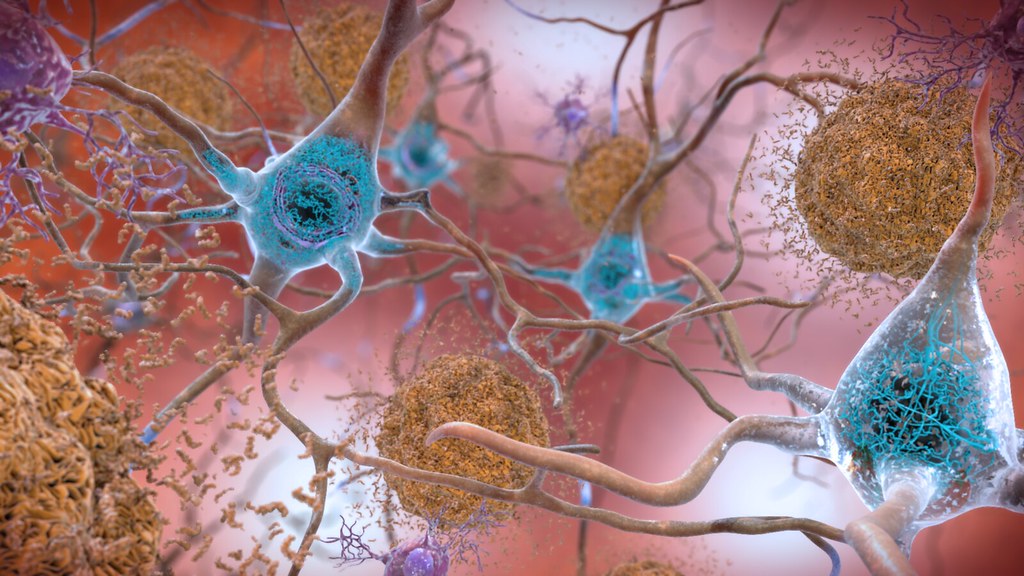Research on mice suggests people infected with COVID-19 may be at increased risk of Parkinson’s disease long after the infection has cleared.
As everyone who has suffered through a cold or the flu understands, viral infections are miserable to experience. Recovering is a relief, but sometimes recovering from the initial viral infection is only the beginning. Specific infections can have an impact on the brain. Most brain-related symptoms, like headaches and dizziness, are mild and clear up as soon as the person recovers from the infection. Other symptoms can be more serious and longer lasting. Some even appear many years after the infection.
The ongoing COVID-19 pandemic is raising concerns that the millions of people recovered from SARS-CoV-2 infections have a higher risk of developing Parkinson’s disease later in life. A recent paper from researchers at Thomas Jefferson University found that mice recovered from COVID-19 are more vulnerable to a toxin that causes neuron death and symptoms of Parkinson’s disease.
Viruses and the brain
Many viruses have been shown to infect neurons. This group of neurotropic viruses includes polio, measles, mumps, western equine encephalitis virus, Zika virus, and Epstein-Barr virus (the virus responsible for “mono”), just to name a few.
The SARS-CoV-2 virus is capable of infecting neurons too. It has also been found in the cerebrospinal fluid, called CSF, that surrounds the brain and spinal cord, but there is no evidence of infected neurons in human COVID-19 patients.
Even when a virus does not directly infect neurons, the way our bodies respond to infection can still affect neurons. High fever, the activation of immune cells, and the release of inflammatory proteins are all used to destroy viral particles. Unfortunately, healthy cells can also be killed by the same processes. Sometimes, after recovering from a viral infection, patients develop uncontrolled movements, called tremors, and other symptoms like Parkinson’s disease.
Parkinson’s disease in mice and men
Parkinson’s disease is a movement disorder affecting around 2% of people over age 55. A person’s risk of developing Parkinson’s disease increases with age, and men are more likely than women to develop it. Parkinson’s disease patients experience stiffness, slow movements, and tremors. Many patients also have symptoms unrelated to movement, like trouble sleeping and a weak sense of smell. All of the symptoms are caused by the death of neurons, especially the ones that signal with dopamine.
One way that scientists mimic Parkinson’s disease in mice is to give them a toxin called MPTP. The toxin damages mitochondria, structures inside cells that create energy. When enough toxin is given, dopaminergic neurons die, mimicking the symptoms of Parkinson’s disease. When researchers gave a very small dose of the toxin to healthy mice, the animals did not experience neuron death and Parkinson’s disease-like symptoms. When the small dose of toxin was given to mice that had been infected with SARS-CoV-2 and recovered from COVID-19 illness, they did develop Parkinson’s disease-like symptoms.
A post-COVID-19 pandemic?
COVID-19 is known to impact the brain and nervous system. The infamous symptoms, loss of taste and smell, are two examples. Reduced sense of smell, known as “hyposmia,” is a consequence of the SARS-CoV-2 virus infecting the cells in the nasal cavity. The infection and inflammation damages the cells and the neighboring neurons. Some COVID-19 patients develop severe brain-related symptoms like strokes, seizures, paralysis, or losing consciousness. These patients usually have increased levels of proteins that indicate inflammation in the neurons and CSF.
Doctors and epidemiologists suspect that a second “pandemic” of Parkinson’s disease diagnoses might begin several years from now, as those who have recovered from COVID-19 age. The evidence says it is possible, but only time will tell.
This study was published in the peer-reviewed journal Movement Disorders.
References
Abdullahi, A. M., Sarmast, S. T., & Singh, R. (2020). Molecular biology and epidemiology of neurotropic viruses. Cureus, 12(8). https://doi.org/10.7759/cureus.9674
Benameur, K., Agarwal, A., Auld, S. C., Butters, M. P., Webster, A. S., Ozturk, T., Howell, J. C., Bassit, L. C., Velasquez, A., Schinazi, R. F., Mullins, M. E., & Hu, W. T. Encephalopathy and encephalitis associated with cerebrospinal fluid cytokine alterations and coronavirus disease, Atlanta, Georgia, USA, 2020. (2020). Emerging Infectious Diseases, 26(9), 2016–2021. https://doi.org/10.3201/eid2609.202122
Chu, H., Chan, J. F.-W., Yuen, T. T.-T., Shuai, H., Yuan, S., Wang, Y., Hu, B., Yip, C. C.-Y., Tsang, J. O.-L., Huang, X., Chai, Y., Yang, D., Hou, Y., Chik, K. K.-H., Zhang, X., Fung, A. Y.-F., Tsoi, H.-W., Cai, J.-P., Chan, W.-M., Ip, J. D., Chu, A. W.-H., Zhou, J., Lung, D. C., Kok, K.-H., To, K. K.-W., Tsang, O. T.-Y., Chan, K.-H., & Yuen, K.-Y. (2020). Comparative tropism, replication kinetics, and cell damage profiling of SARS-CoV-2 and SARS-CoV with implications for clinical manifestations, transmissibility, and laboratory studies of COVID-19: An observational study. The Lancet Microbe, 1(1), e14–e23. https://doi.org/10.1016/S2666-5247(20)30004-5
Dauer, W., & Przedborski, S. (2003). Parkinson’s disease: Mechanisms and models. Neuron, 39(6), 889–909. https://doi.org/10.1016/s0896-6273(03)00568-3
Glezer, I., Bruni‐Cardoso, A., Schechtman, D., & Malnic, B. (2021). Viral infection and smell loss: The case of COVID‐19. Journal of Neurochemistry, 157(4), 930–943. https://doi.org/10.1111/jnc.15197
Huang, Y. H., Jiang, D., & Huang, J. T. (2020). SARS-CoV-2 detected in cerebrospinal fluid by PCR in a case of COVID-19 encephalitis. Brain, Behavior, and Immunity, 87, 149. https://doi.org/10.1016/j.bbi.2020.05.012
Jang, H., Boltz, D. A., Webster, R. G., & Smeyne, R. J. (2009). Viral parkinsonism. Biochimica et Biophysica Acta (BBA)-Molecular Basis of Disease, 1792(7), 714–721. https://doi.org/10.1016/j.bbadis.2008.08.001
Kaundal, R. K., Kalvala, A. K., & Kumar, A. (2021). Neurological implications of COVID-19: Role of redox imbalance and mitochondrial dysfunction. Molecular Neurobiology, 58(9), 4575–4587. https://doi.org/10.1007/s12035-021-02412-y
Kempuraj, D., Selvakumar, G. P., Ahmed, M. E., Raikwar, S. P., Thangavel, R., Khan, A., Zaheer, S. A., Iyer, S. S., Burton, C., James, D., & Zaheer, A. (2020). COVID-19, mast cells, cytokine storm, psychological stress, and neuroinflammation. The Neuroscientist, 26(5-6), 402–414. https://doi.org/10.1177/1073858420941476
Smeyne, R. J., Eells, J. B., Chatterjee, D., Byrne, M., Akula, S. M., Sriramula, S., O’Rourke, D. P., & Schmidt, P. (2022). COVID‐19 infection enhances susceptibility to oxidative stress-induced parkinsonism. Movement Disorders. Advance online publication. https://doi.org/10.1002/mds.29116
Van Den Eeden, S. K., Tanner, C. M., Bernstein, A. L., Fross, R. D., Leimpeter, A., Bloch, D. A., & Nelson, L. M. (2003). Incidence of Parkinson’s disease: Variation by age, gender, and race/ethnicity. American Journal of Epidemiology, 157(11), 1015–1022. https://doi.org/10.1093/aje/kwg068

About the Author
Emery Haley is a nonbinary cell biologist with a passion for diversity in STEM. They are currently a PhD student at Van Andel Institute Graduate School and are planning to pursue a career in science communication. Connect with them on X/Twitter @EmeryHaley2 and LinkedIn!




